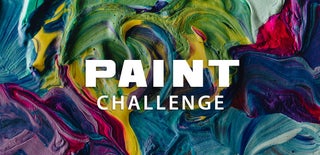Introduction: Red Desert Painting
Very few times in my life have I picked up a paintbrush and actually sat down to paint. Which is why this project was... let's say "special", for a lack of a better term.
One day I just had an urge to paint, stumbled upon paint, a palette and a single paintbrush and just... painted. Heck, I didn't even have a canvas.
I am by no means a professional, nor do I claim to be one. Like I previously said, I rarely draw, much less paint, but I am inexplicably talented in visual art for someone who never draws.
Just a random landscape popped into my mind; a desert, but with red sand (fun fact: they do exist), and apparently that was all the inspiration I needed.
If you're a beginner in painting or have just never painted before, don't worry, because we're in this together, buddy.
Buckle up, reading this should be one hell of a ride.
Supplies
What I used:
- Yellow oil paint
- Red oil paint
- Orange oil paint
- White oil paint
- Black oil paint
- Blue oil paint
- Purple oil paint
- A single paintbrush
- A wooden palette
- A standard 8.5" x 11"sheet of paper
AND
- Cardboard
... as a canvas.
WHAT YOU SHOULD USE:
I used oil paint since that was the only paint I happened to stumble upon.
Although it is way better for blending, I would not recommend it. I'd say you should use the less expensive and easier-to-come-by alternative: acrylic paint. In the end the choice is yours, I'm not your dad after all.
- Yellow paint
- Red paint
- Orange paint
- White paint
- Black paint
- Blue paint
- Purple paint
- Paintbrushes of many sizes
- Palette (optional, anything will do, you just need a space to mix colors together)
- Canvas
Step 1: Picking References - Optional
References
I personally didn't use any reference art while making this project besides googling "camel" once.
However, there's nothing wrong with using reference art. Many professional artists regularly use references.
Google Images is your friend here. Googling keywords such as "sky", "sunset", "desert", etc. will greatly help you
Step 2: Mixing the Colors
Some people like having color palettes set up when painting, where, before painting, they chose the colors they’ll limit themselves to. Others, like myself, don’t, and just make the colors as they go along. Both methods are valid.
There’s no secret; you just go with your gut. Mix colors based on what you feel is appropriate. Don't be shy with the colors. Let your inner witch reveal itself.
Step 3: Lead Pencil Sketch
With a lead pencil, quickly sketch the basic shape you want your painting to take.
This process should.not take more than 5 minutes. Remember: absolutely no detail.
Step 4: Painting the Sky
Now it's time to paint.
You should start by painting the sky and the sun first.
I used light blue with a hint of purple for the sky ( so white and blue, with a smudge of purple).
The sun is a mix of orange and yellow but predominately yellow.
Step 5: Painting the Desert
Now the most important part: the desert.
First, you must get the color right. You need two colors. The light part and the shadow part.
As you might've guessed, the light part is a mix of red and orange, and the shadow-y part is just the light part but mixed with black.
You'll spend a lot of time trying to get the color right.
Next, how to actually paint the dunes.
They're actually super easy to paint. You've seen pictures of dunes, right?
Look at the shadows.
That's right: it's a contrast, not a gradient like most shadows you'll have to draw in your life are.
Just draw a smooth mountain and separate it in two parts, to your heart's content. The part closest to the sun is the light part and the other isn't. Try not to mess that up and that's all.
You'll notice the shadow-y part of one dune comes into contact with another's light part. That's the only gradient you'll ever have to do. And if you're using oil paint, the blending does itself. You literally have to do nothing.
And that's all you need to know. Now go wild with your dunes, create your own little desert!
Step 6: Painting the Man and His Camel
Now you could just stop there, or you can add characters to your painting. As you might've noticed, that's what I did. I added a man and his camel, which I promptly named "Lizard". That is in no way relevant, I just thought it'd be cool if the camel had a name.
Anyways, I put them in a shadow-y part so dark ya can't see em'. This is to avoid having to add details to the characters. The man is wearing a robe so that I don't have to draw silhouettes.
You can call it "trying to hide the fact I'm bad at drawing people", I call it resourcefulness.
At first I tried to paint Lizard by memory and that went horribly wrong. So then I googled "camel" ,as previously stated, and used that as reference, and the rest, as they say, is history.
That's all. Have fun :)

Participated in the
Paint Challenge









